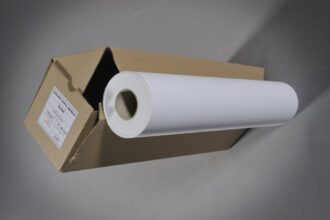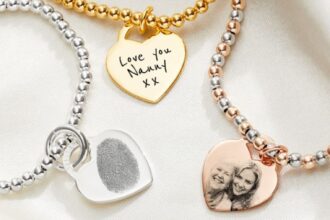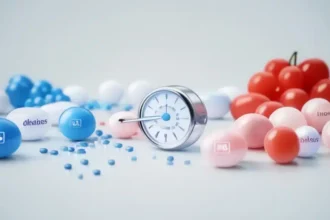Rapid prototyping has revolutionized how innovative ideas are transformed into tangible, functional electronic devices. Whether you’re developing the next smart gadget or exploring IoT solutions, rapid prototyping ensures concepts come to life quickly, efficiently, and affordably.
For hardware startups, engineers, and developers, Twin Designs is changing the game, enabling fast and cost-effective prototyping for all types of electronic projects. This blog explores what rapid prototyping means in electronics, its benefits, and how Twin Designs can help accelerate your creative vision.
What Is Rapid Prototyping in Electronics?
Rapid prototyping in electronics involves using advanced tools and processes to quickly produce functional models of electronic hardware. This could include Printed Circuit Boards (PCBs), embedded systems, and even custom casings produced via 3D printing or other additive manufacturing techniques.
Traditional Prototyping vs. Rapid Prototyping
Traditional methods of prototyping electronic hardware are slow, expensive, and rigid. They often involve labor-intensive iterations, requiring significant manual effort to manufacture and rework components.
Rapid prototyping breaks through these barriers by using technologies such as:
- PCB Design Toolslike Altium Designer or KiCad, which allow fast and collaborative PCB layout revisions.
- 3D Printingto create casings or small hardware components with precision.
- Modular Development Boards, such as Arduino or Raspberry Pi, to jumpstart functional testing without starting from scratch.
The result? Significantly shortened development times and reduced costs, allowing ideas to go from abstract concepts to physical prototypes in record time.
Key Benefits of Rapid Prototyping
Why is rapid prototyping a game-changer for electronics? Here are some critical advantages it offers for startups, developers, and hardware designers alike:
1. Faster Development Cycles
Time is one of the most precious resources in hardware development. Rapid prototyping allows engineers to validate designs faster, shortening the time from idea to production.
2. Cost Savings in Early Design Stages
Mistakes are inevitable in product development, but identifying them early saves significant costs in the long run. With rapid prototyping, iterative testing can be done cheaply, lowering the financial risk.
3. Quick Design Iteration and Validation
By creating functional prototypes swiftly, designers can refine and enhance their products across multiple iterations, ensuring that every flaw is addressed before production.
4. Easier Stakeholder & Investor Pitching
A functional prototype speaks volumes compared to a PowerPoint slide or wireframe. Demonstrating a working model during pitches builds credibility and makes it easier to gain approval or funding.
When to Use Rapid Prototyping
Not sure where rapid prototyping fits into your development process? Here are key stages when it’s most impactful:
- Concept Testing
Is your idea feasible? A quick prototype will tell you.
- Pre-Production Design Verification
Catching design issues early ensures smooth production later.
- Early User Feedback Collection
Validate functionality, usability, and market fit through hands-on tests with potential users.
- Troubleshooting Design Flaws
Prototyping helps you refine both hardware and software systems before committing to manufacturing.
Rapid Prototyping Services Offered by Twin Designs
At Twin Designs, rapid prototyping isn’t just a service; it’s how we empower innovators to bring their ideas to life. Here’s what we provide to help your projects succeed:
1. Embedded Systems and PCB Design
From single-layer PCBs to more complex multi-layer layouts, our team optimizes circuits for functionality and manufacturability.
2. Quick Turnaround for Functional Hardware Prototypes
We work fast to create working prototypes you can test right away.
3. Firmware Integration and Testing
Hardware is nothing without robust firmware. We ensure the software integrates seamlessly with your device.
4. Custom Casing Design with 3D Printing
Need your prototype to look as good as it works? Our customized products include sleek 3D-printed casings.
5. Iterative Feedback & Improvement Cycles
Hardware development is a progression. Our methodology supports multiple iterations to finetune every aspect of your project.
Industries That Benefit Most from Rapid Prototyping
Rapid prototyping is especially useful for businesses in fast-evolving fields. Here are some industries driving innovation with our services:
- IoT and Smart Devices
Rapid prototyping accelerates the development of connected devices, crucial in this highly competitive space.
- Consumer Electronics
Developers in this industry can use quick prototyping to shorten product launch timelines.
- Wearables and Healthcare Devices
With intricate designs and sensitive uses, iterations are crucial to ensure designs meet both functionality and safety standards.
- Industrial Automation
Automating key processes often requires custom hardware, and rapid prototyping ensures efficiency every step of the way.
Real-World Impact: How Twin Designs Accelerates Innovation
Case Study
Client X, a hardware startup, approached Twin Designs with a novel IoT product idea. They needed a functional prototype ready for investor pitches within six weeks. Our team designed a multi-layer PCB, developed custom firmware, and created a 3D-printed casing, all while incorporating regular feedback loops.
The result? Client X secured funding and reduced their time-to-market by 40%. With streamlined prototyping, Twin Designs turned a big idea into reality quickly and efficiently.
Build Fast, Build Smart with Twin Designs
Rapid prototyping isn’t just a trend; it’s a necessity for staying competitive in electronics manufacturing. With faster development cycles, significant cost savings, and improved designs, this approach helps businesses innovate faster and more effectively.
At Twin Designs, we’re committed to helping you achieve this. From PCB design to custom 3D-printed casing, we provide everything you need to turn concepts into working prototypes.
















